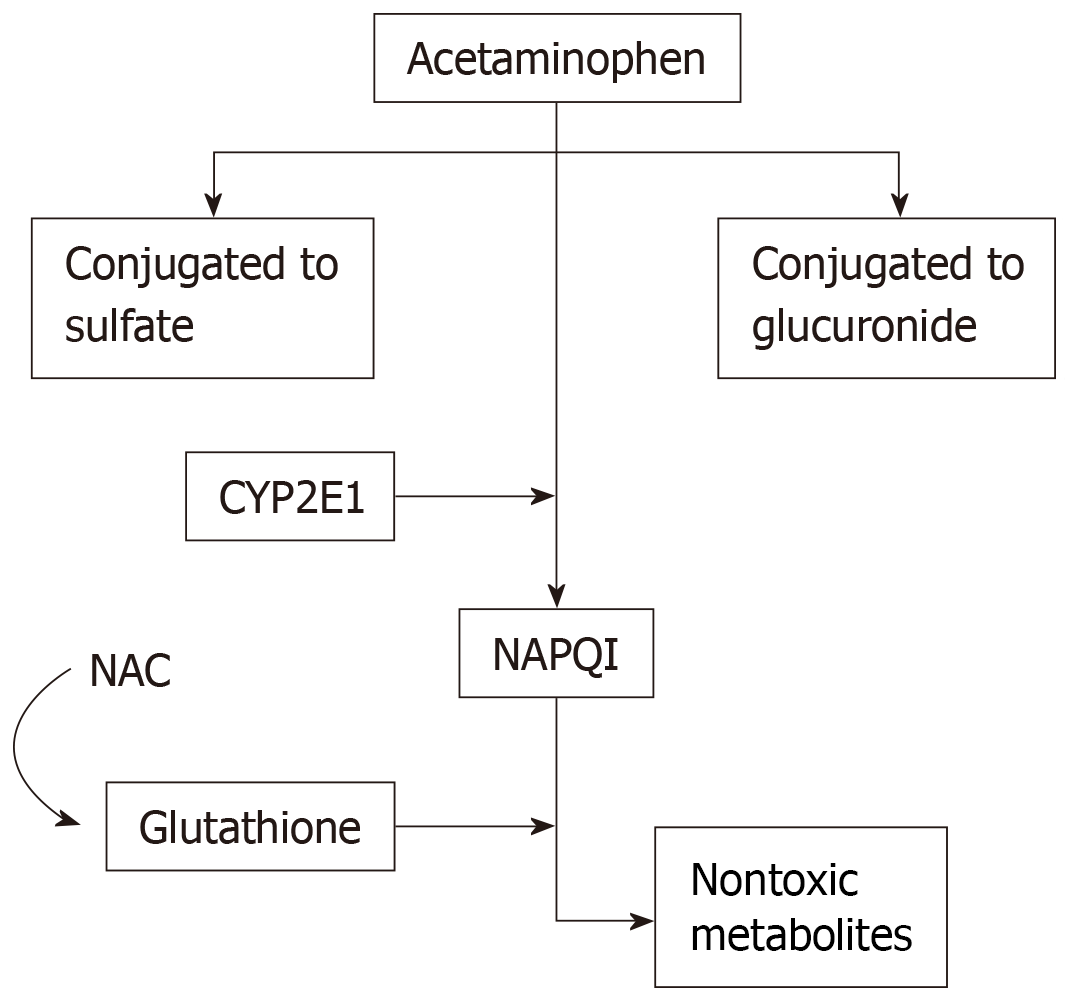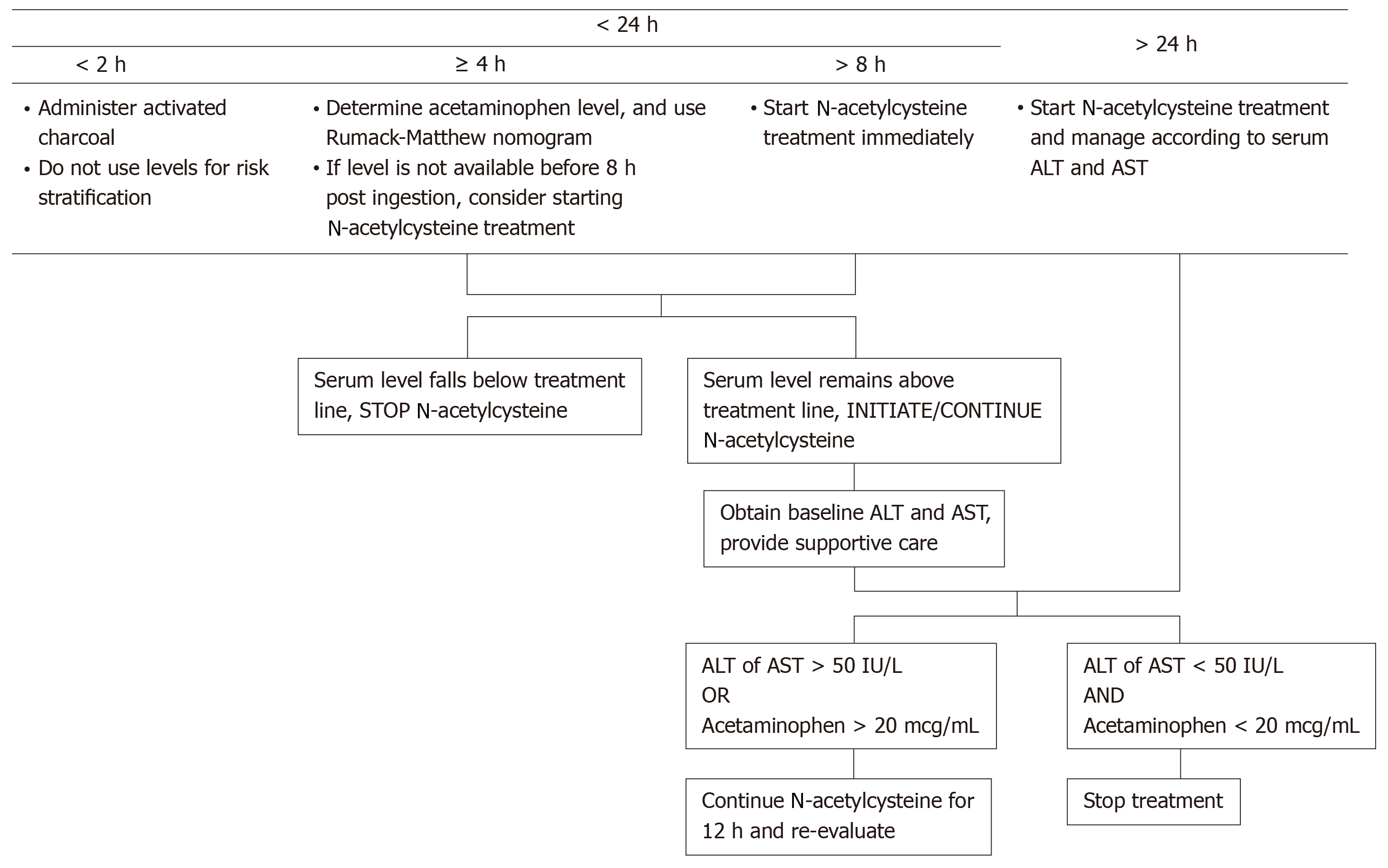Copyright
©The Author(s) 2020.
World J Hepatol. Apr 27, 2020; 12(4): 125-136
Published online Apr 27, 2020. doi: 10.4254/wjh.v12.i4.125
Published online Apr 27, 2020. doi: 10.4254/wjh.v12.i4.125
Figure 1 Paracetamol metabolism pathways and breakdown into N-acetyl-p-benzoquinone imine, by cytochrome P450 2E1.
N-acetyl-p-benzoquinone imine is the toxic metabolite produced from paracetamol metabolism when the other two conjugation pathways become over-saturated. The resultant toxic N-acetyl-p-benzoquinone imine byproduct is converted into nontoxic metabolites by glutathione, which is regenerated by N-acetylcysteine. NAPQI: N-acetyl-p-benzoquinone imine; CYP2E1: Cytochrome P450 2E1; NAC: N-acetylcysteine.
Figure 2 Factors that pre-dispose patients to increased paracetamol toxicity.
Figure 3 Flowchart depicting the management pathway for acute paracetamol overdose/ toxicity.
ALT: Aminotransferase; AST: Aspartate aminotransferase.
- Citation: Rotundo L, Pyrsopoulos N. Liver injury induced by paracetamol and challenges associated with intentional and unintentional use. World J Hepatol 2020; 12(4): 125-136
- URL: https://www.wjgnet.com/1948-5182/full/v12/i4/125.htm
- DOI: https://dx.doi.org/10.4254/wjh.v12.i4.125











